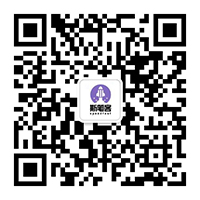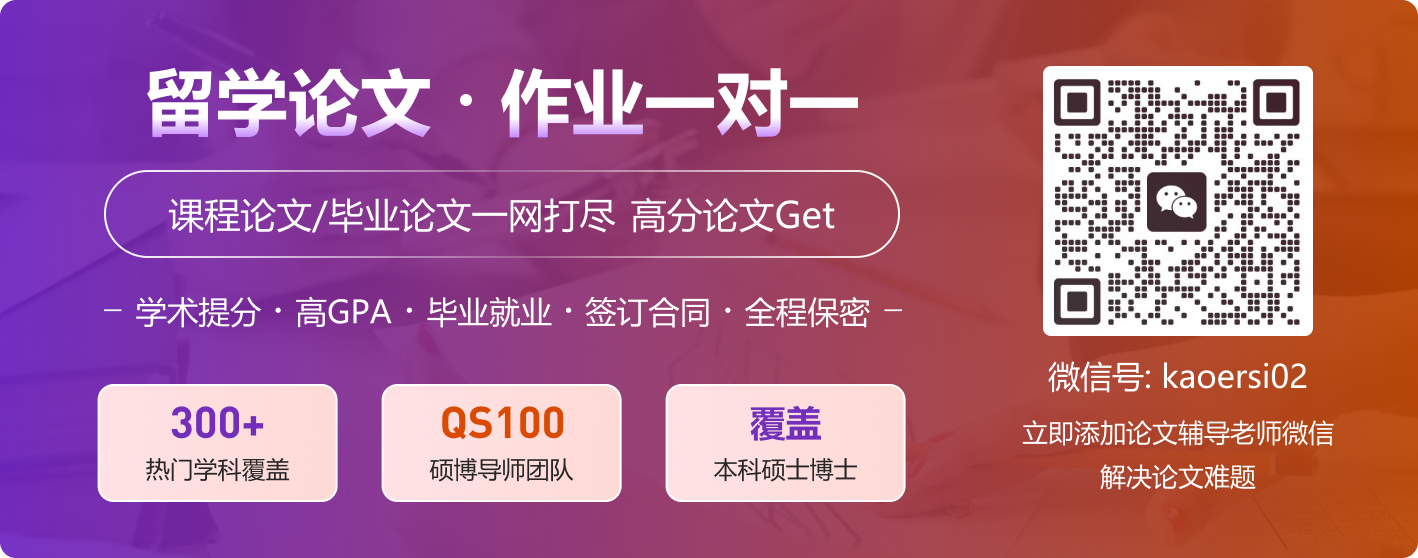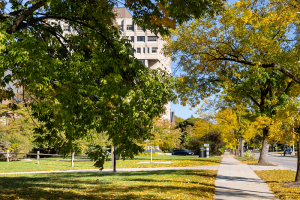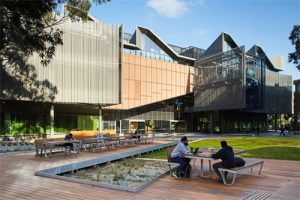
” 辅导COMP9444程序、 写作Python语言编程COMP9444 Neural Networks and Deep LearningTerm 2, 2021Project 1 – Characters, Spirals and Hidden Unit DynamicsDue: Friday 16 July, 23:59 pmMarks: 30% of final AssessmentIn this assignment, you will be implementing and training various neural network models for four different tasks, and analysing theresults.You are to submit three Python files kuzu.py, rect.py and encoder.py, as well as a written report hw1.pdf (in pdf format).Provided FilesCopy the archive hw1.zip into your own filespace and unzip it. This should create a directory hw1 with the data file rect.csv,subdirectories plot and net, as well as eleven Python files kuzu.py, rect.py, encoder.py, kuzu_main.py, rect_main.py, endoder_main.py,encoder_model.py, seq_train.py, seq_plot.py, reber.py and anbn.py.Your task is to complete the skeleton files kuzu.py, rect.py, encoder.py and submit them, along with your report.Part 1: Japanese Character RecognitionFor Part 1 of the assignment you will be implementing networks to recognize handwritten Hiragana symbols. The dataset to be usedis Kuzushiji-MNIST or KMNIST for short. The paper describing the dataset is available here. It is worth reading, but in short:significant changes occurred to the language when Japan reformed their education system in 1868, and the majority of Japanesetoday cannot read texts Published over 150 years ago. This paper presents a dataset of handwritten, labeled examples of this old-style script (Kuzushiji). Along with this dataset, however, they also provide a much simpler one, containing 10 Hiragana characterswith 7000 samples per class. This is the dataset we will be using.Text from 1772 (left) compared to 1900 showing the standardization of written Japanese.1. [1 mark] Implement a model NetLin which computes a linear function of the pixels in the image, followed by log softmax. Runthe code by typing:python3 kuzu_main.py –net linCopy the final accuracy and confusion matrix into your report. The final accuracy should be around 70%. Note that the rows ofthe confusion matrix indicate the target character, while the columns indicate the one chosen by the network. (0=o, 1=ki,2=su, 3=tsu, 4=na, 5=ha, 6=ma, 7=ya, 8=re, 9=wo). More examples of each character can be found here.2. [1 mark] Implement a fully connected 2-layer network NetFull (i.e. one hidden layer, plus the output layer), using tanh at thehidden nodes and log softmax at the output node. Run the code by typing:python3 kuzu_main.py –net full2021/6/29 COMP9444 Project 1 httpss://www.cse.unsw.edu.au/~cs9444/21T2/hw1/ 2/5Try different values (multiples of 10) for the number of hidden nodes and try to determine a value that achieves high accuracy(at least 84%) on the test set. Copy the final accuracy and confusion matrix into your report.3. [1 marks] Implement a convolutional network called NetConv, with two convolutional layers plus one fully connected layer, allusing relu activation function, followed by the output layer, using log softmax. You are free to choose for yourself the numberand size of the filters, metaparameter values (learning rate and momentum), and whether to use max pooling or a fullyconvolutional architecture. Run the code by typing:python3 kuzu_main.py –net convYour network should consistently Achieve at least 93% accuracy on the test set after 10 training epochs. Copy the finalaccuracy and confusion matrix into your report.4. [3 marks] Briefly discuss the following points:a. the relative accuracy of the three models,b. the confusion matrix for each model: which characters are most likely to be mistaken for which other characters, andwhy?Part 2: Rectangular Spirals TaskFor Part 2 you will be training a network to distinguish two intertwined rectangular spirals. The supplied code rect_main.py loads thetraining data from rect.csv, applies the specified model and produces a graph of the resulting function, along with the data. For thistask there is no test set as such, but we instead judge the generalization by plotting the function computed by the network andmaking a visual assessment.1. [2 marks] Provide code for a Pytorch Module called Network which is initialized with two parameters layer and hid.If layer == 1 the network should only have one hidden layer, with hid units. If layer == 2 it should have two (fully connected)hidden layers, each with hid units. The tanh activation function should be applied at each hidden layer, and sigmoid at theoutput layer.2. [2 marks] Using graph_output() as a guide, write a method called graph_hidden(net, layer, node) which plots the activation(after applying the tanh function) of the hidden node with the specified number (node) in the specified layer (1 or 2).Specifically, it should show where the activation is positive and where it is negative.Hint: you might need to modify forward() so that the hidden unit activations are retained, i.e. replace hid1 = torch.tanh(…)with self.hid1 = torch.tanh(…)3. [1 mark] Train a network with one hidden layer by typing:python3 rect_main.py –layer 1 –hid 10Try to determine a number of hidden nodes close to the mininum required for the network to be trained successfully (although,it need not be the absolute minimum). You may need to run the network several times before finding a set of initial weightswhich allows it to converge. (If it trains for a minute or so and seems to be stuck in a local minimum, kill it with ?cntrl?-c andrun it again). You are free to adjust the learning rate and initial weight size, if you want to. The graph_output() method will2021/6/29 COMP9444 Project 1 httpss://www.cse.unsw.edu.au/~cs9444/21T2/hw1/ 3/5generate a picture of the function Computed by your Network and store it in the plot subdirectory with a name like out?_?.png.You should include this picture in your report. Your graph_hidden() method should generate plots of all the hidden nodes, whichyou should also include in your report.4. [1 mark] Train a network with two hidden layers by typing:python3 rect_main.py –layer 2 –hid 10As before, try to determine a number of hidden nodes close to the mininum required for the network to be trained successfully.You should include the graphs of the output and the hidden nodes in your report.5. [3 marks] Briefly discuss the following points:a. a qualitative description of the functions computed by the different layers of the two networks,b. the qualitative difference, if any, between the overall function (i.e. output as a function of input) computed by the twonetworks.Part 3: Encoder NetworksIn Part 3 you will be editing the file encoder.py to create a dataset which, when run in combination with encoder_main.py, producesthe stylized map of Australia shown below.You should first run the code by typingpython3 encoder_main.py –target star16Note that target is determined by the tensor star16 in encoder.py, which has 16 rows and 8 columns, indicating that there are 16inputs and 8 outputs. The inputs use a one-hot encoding and are generated in the form of an identity matrix using torch.eye()1. [2 marks] Create by hand a dataset in the form of a tensor called aust26 in the file encoder.py which, when run with thefollowing command, will produce an image essentially the same as the stylized map of Australia shown above (but possiblyrotated or reflected).python3 encoder_main.py –target aust26The pattern of dots and lines must be identical, except for the possible rotation or reflection. Note in particular the six anchorpoints in the corners and on the edge of the figure.Your tensor should have 26 rows and 20 columns. Include the final image in your report, and include the tensor aust26 in yourfile encoder.pyPart 4: Hidden Unit Dynamics for Recurrent Networks2021/6/29 COMP9444 Project 1 httpss://www.cse.unsw.edu.au/~cs9444/21T2/hw1/ 4/5In Part 4 you will be investigating the hidden unit dynamics of recurrent networks trained on language prediction tasks, using thesupplied code seq_train.py and seq_plot.py.1. [3 marks] Train a Simple Recurrent Network (SRN) on the Reber Grammar prediction task by typingpython3 seq_train.py –lang reberThis SRN has 7 inputs, 2 hidden units and 7 outputs. The trained networks are stored every 10000 epochs, in the netsubdirectory. After the training finishes, plot the hidden unit activations at epoch 50000 by typingpython3 seq_plot.py –lang reber –epoch 50The dots should be arranged in discernable clusters by color. If they are not, run the code again until the training is successful.The hidden unit activations are Printed according to their state, using the colormap jet:Based on this colormap, annotate your figure (either electronically, or with a pen on a printout) by drawing a circle around thecluster of points corresponding to each state in the state machine, and drawing arrows between the states, with each arrowlabeled with its corresponding symbol. Include the annotated figure in your report.2. [1 mark] Train an SRN on the anbnlanguage prediction task by typingpython3 seq_train.py –lang anbnThe anbnlanguage is a concatenation of a random number of As followed by an equal number of Bs. The SRN has 2 inputs, 2hidden units and 2 outputs.Look at the predicted probabilities of A and B as the training progresses. The first B in each sequence and all As after the firstA are not deterministic and can only be predicted in a probabilistic sense. But, if the training is successful, all other symbolsshould be correctly predicted. In particular, the network should predict the last B in each sequence as well as the subsequent A.The error should be consistently in the range of 0.01 or 0.02. If the network appears to have learned the task successfully, youcan stop it at any time using ?cntrl?-c. If it appears to be stuck in a local minimum, you can stop it and run the code again untilit is successful.After the training finishes, plot the hidden unit activations by typingpython3 seq_plot.py –lang anbn –epoch 1002021/6/29 COMP9444 Project 1 httpss://www.cse.unsw.edu.au/~cs9444/21T2/hw1/ 5/5Include the resulting figure in your report. The states are again printed according to the colormap jet. Note, however, thatthese states are not unique but are instead used to count either the number of As we have seen or the number of Bs we arestill expecting to see.3. [2 marks] Briefly explain how the anbnprediction task is achieved by the network, based on the figure you generated inQuestion 2.4. [1 mark] Train an SRN on the alanguage prediction task by typingpython3 seq_train.py –lang anbncnThe SRN now has 3 inputs, 3 Hidden units and 3 outputs. Again, the state is used to count up the As and count down the Bsand Cs. Continue training (re-starting, if necessary) until the network is able to reliably predict all the Cs as well as thesubsequent A, and the error is consistently in the range of 0.01 or 0.02.After the training finishes, plot the hidden unit activations by typingpython3 seq_plot.py –lang anbncn –epoch 200Rotate the figure in 3 dimensions to get one or more good view(s) of the points in hidden unit space.5. [2 marks] Briefly explain how the aprediction task is achieved by the network, based on the figure you generated inQuestion 4.6. [4 marks] This question is intended to be more challenging. Train an LSTM network to predict the Embedded Reber Grammar,by typingpython3 seq_train.py –lang reber –embed True –model lstm –hid 8You can adjust the number of hidden nodes if you wish. Once the training is successful, try to analyse the behavior of theLSTM and explain how the task is accomplished.SubmissionYou should submit by typinggive cs9444 hw1 kuzu.py rect.py encoder.py hw1.pdfYou can submit as many times as you like – later submissions will overwrite earlier ones. You can check that your submission hasbeen received by using the following command:9444 classrun -checkThe submission deadline is Friday 16 July, 23:59. 15% penalty will be applied to the (maximum) mark for every 24 hours late after thedeadline.Additional information may be found in the FAQ and will be considered as part of the specification for the project. You should checkthis page regularly.Plagiarism PolicyGroup submissions will not be Allowed for this assignment. Your code and report must be entirely your own work. Plagiarismdetection software will be used to compare all submissions pairwise and serious penalties will be applied, particularly in the case ofrepeat offences.DO NOT COPY FROM OTHERS; DO NOT ALLOW ANYONE TO SEE YOUR CODEPlease refer to the UNSW Policy on Academic Integrity and Plagiarism if you require further clarification on this matter.Good luck!请加QQ:99515681 或邮箱:99515681@qq.com WX:codehelp
“
添加老师微信回复‘’官网 辅导‘’获取专业老师帮助,或点击联系老师1对1在线指导。







